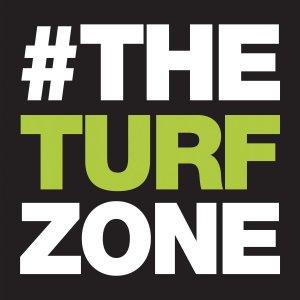The Turf Zone Podcast

Mississippi Turfgrass Association – Native and Natural Roughs for Southeastern Golf Courses
Mississippi Turfgrass – Jay McCurdy, Ph.D., Associate Professor, Mississippi State University
Golf course designers and maintainers are increasingly interested in low-maintenance rough and natural areas. Labor shortages and maintenance costs are partially responsible for this trend. The general public’s growing interest in the environmental benefits of golf courses also contributes to the trend. Numerous sources establish the benefits of native and natural roughs. Although not discussed in length, benefits include:
* Aesthetics
* Reduced inputs, such as fertilizers, pesticides, fuel, equipment hours, and labor costs
* Improved stormwater retention and runoff water quality
* Temperature modification
* Wildlife habitat inclusion
This article covers several important topics regarding native golf course roughs in the southeastern United States, including species selection, establishment, and maintenance.
Southeastern states share similar environmental and socioeconomic conditions that influence course design and play. These conditions, while not unique, distinguish southeastern golf course design and maintenance from that of other regions. For instance, many architects and aficionados desire the aesthetics of a links-style, fine fescue rough, but in the Southeast, this is rarely practical or sustainable.
The Southeast’s humid subtropical climate is characterized by warm and moist summer months. Annual rainfall can exceed 50 inches. Much of that rainfall occurs during the active growth period of warm-season plant species, which dominate the playing surfaces where golf is played year-round. Contrast this with the temperate oceanic climate of Scotland, for instance, where annual rainfall is roughly half that of the southeastern United States and the temperature range is ideal for cool-season species. For these reasons, species selection, culture of native areas, and expectations for golf courses in the southeastern United States should be soundly based.
It is important to differentiate native and naturalized species. Native plants originated locally and predate European settlement. Naturalized plants are not native but grow, reproduce, and maintain viable populations without human intervention. These definitions may seem academic, but an owner’s or architect’s specification of one or the other may have real and lasting consequences.
Natural areas in the southeast are not limited to grasses. They may be composed of trees, broadleaf forbs, sedges, and rushes. Each of these species plays an integral part in a healthy ecosystem.
Many American golfers and superintendents are familiar with the look of fine fescue roughs on links-style courses, such as Chambers Bay or Oakmont. Unfortunately, fescues often fail to persist in the mid to coastal Southeast and are rarely “low maintenance.” Despite the availability of many suitable native and naturalized grasses, superintendents are often unfamiliar with their characteristics.
Tall Fescue
Tall fescue (Festuca arundinacea) is common in golf course natural areas throughout the Southeast. It is a cool-season grass native to Europe and Asia but has been naturalized in many places outside of its native range. Many pastoral golf settings (Sweetens Cove, Old Waverly, and Jackson Country Club) have mixtures of tall fescue and the native warm-season grasses little bluestem and broomsedge. Tall fescue is only moderately drought tolerant compared to most warm-season alternatives; nevertheless, it persists well in much of the mid and deep South. As a cool-season perennial, it is best established in the fall. It tolerates relatively low mowing heights in the moderate climate of the Southeast’s transition zone but generally does not require mowing to propagate by seed, as seed heads ripen in midsummer. The further south one goes, the less tolerant of mowing it becomes. For this reason,






 Visit Podcast Website
Visit Podcast Website RSS Podcast Feed
RSS Podcast Feed Subscribe
Subscribe
 Add to MyCast
Add to MyCast